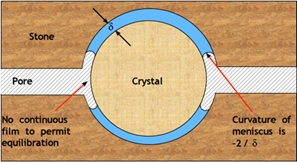Predicting salt damage in practice: A theoretical insight into laboratory tests.
DOI:
https://doi.org/10.21809/rilemtechlett.2017.41Keywords:
cultural heritage, stone, brick, masonry, salt damage, crystallization pressure, salt testing, sodium sulfate, sodium chloride, conservation, preservationAbstract
Salt crystallization is accepted to represent one of the major causes for the degradation of building and ornamental stone. As such, it has attracted the attention of researchers, who over the years have progressively unraveled most mechanisms involved in salt damage. Despite this, many questions subsist about how to quantitatively predict damage or its progression, and in particular how to relate performance on site to that in laboratory tests.
In this context, a new RILEM TC has been started with the objective of defining laboratory tests that deliver more reliable predictions of field behavior. One deliverable of this TC, is to provide a theoretical insight into this question based on recent progress on the understanding of salt damage. This paper presents a summary of this work, highlighting key aspects relating to crystallization pressure, chemo-mechanics and transport. Implications are more specifically discussed in relation to existing accelerated tests in an attempt to better define the type of field exposure that they may best represent.
A simple conceptual model for the development of salt damage is introduced. During an initial “induction” phase, transport of ions and accumulation of salt in the porous materials occurs without causing detectable damage until a critical point, termed “damage onset” is reached. Beyond this point, during the “propagation phase”, the material degrades increasingly. The implications of these two phases are discussed in relation to the selection of appropriate salt weathering tests and conservation interventions.

Downloads
Additional Files
Published
How to Cite
Issue
Section
License
Authors retain copyright of the articles published in RILEM Technical Letters and grant the journal the right of first publication with open access. The work is simultaneously licensed under Creative Commons Attribution 4.0 International License (CC BY 4.0) that allows others to share and adapt the work under the following terms: 1) a proper attribution is given in a form of a reference to the original work's authorship and initial publication in RILEM Technical Letters (bibliographic record with the DOI link); 2) a link to the license is provided; 3) the changes (if any) are indicated.









